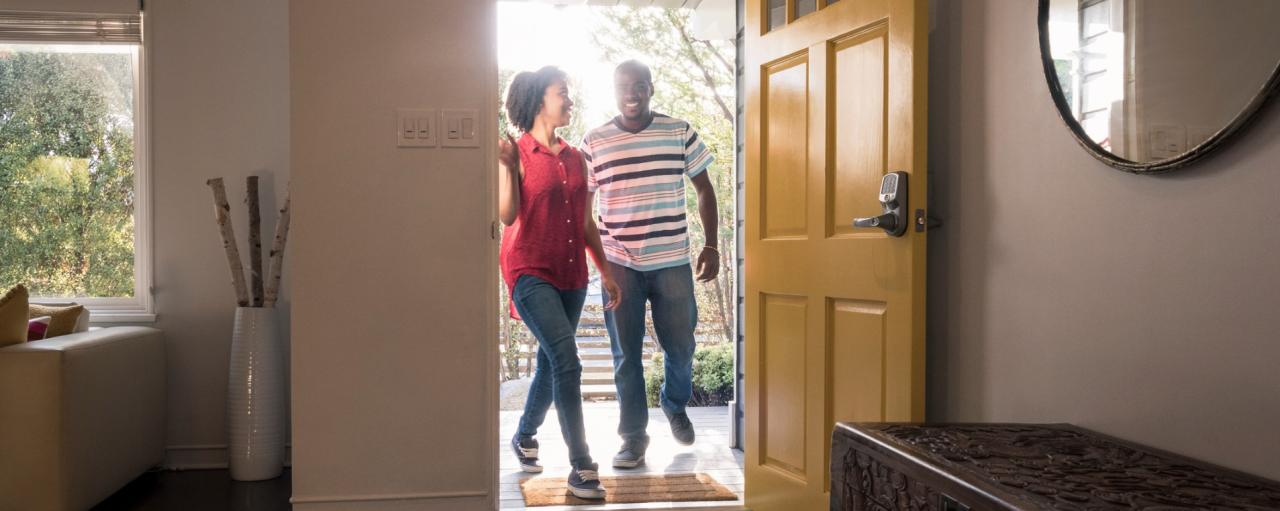
To many people, purchasing a home is one of life’s key milestones. Having a place to call your own not only confers stability and status, it is often also a store of wealth for you and even your children. But homeownership doesn’t always lead to prosperity in the United States, my colleagues* and I found.
First, some background: Although slavery, segregation and other explicitly discriminatory policies and practices have long been officially consigned to history, wealth and income disparities between Black and white Americans remain stark. White households are on average six times richer than Black ones and earn twice as much. The gap between white and Black homeownership rates is ironically wider now than it was in 1960.
This begs the question of whether policies intended to close the racial gap in homeownership and wealth are effective. Our analysis shows that a long-standing mortgage scheme that enables Black households to purchase homes may lead to unintended consequences that perpetuate racial wealth disparities.
Unintended consequences
The scheme, underwritten by the Federal Housing Administration (FHA), enables cash-strapped households to obtain loans covering as much as 96.5 percent of home prices. In 2020, 42 percent of Black borrowers applied for an FHA mortgage, compared to 15 percent of white applicants. This is not surprising if you consider that first-time white homebuyers come up with US$25,000 for downpayment on average whereas Black buyers, who are generally less well-off, can only afford US$600.
But the FHA mortgage scheme has a drawback: Borrowers are subject to loan caps which limit them to cheaper homes. Properties eligible for FHA loans cost US$200,000 on average, only a third of the typical home. Unfortunately, cheaper homes are usually not located in areas with better-paying jobs. You would hardly expect Detroit, for example, to offer similar opportunities for upward mobility as New York City.
We investigated whether the difference between how much Black and white homeowners borrow, or the leverage gap, contributes to persistent wealth disparities between Black and white Americans, and by how much. To do so, we developed a model that simulated the leverage gap and its associated outcomes, including where people live, their incomes and long-term wealth accumulation.
Even without factoring in explicit discrimination such as racial bias in loan decisions, our model generated a substantial Black-white wealth gap: White households were on average 3.25 times richer than Black ones, a gap equivalent to more than half of the disparity in real life.
Moving to opportunity
Next, we conducted counterfactual experiments to uncover how alternative policies could affect the racial wealth gap. First, we relaxed the leverage requirement in high-opportunity areas, enabling borrowers to purchase homes at a 95-percent loan-to-value ratio instead of the prevailing 80 percent.
The result: Average home ownership in the desirable areas increased by 2.5 percent across all races, and more than 25 percent among Black households. This in turn bolstered Black incomes by nearly 5 percent and Black wealth by 18 percent.
What if policies were aimed at reducing frictions of moving between high- and low-opportunity areas instead of enabling homeownership? Our model shows that such policies would substantially increase Black wealth by 50 percent and income by 6 percent, thus reducing Black-white wealth gaps. The flip side is that Black homeownership would decline by 4 percent overall, as some households choose to rent in high-opportunity areas – and reap benefits like better jobs – than purchase homes in less desirable locales. These households would then consume and save more, such that should they eventually purchase homes, they would be richer and borrow less than they would have to otherwise.
Homeownership is no sure way to wealth
Believed to be one of the stepping stones to a better life, homeownership has long been one of the underpinnings of the American Dream. But our study shows that it may not be the best way to amass wealth for Black Americans and other minorities, since existing housing mortgage policies constrain their ability to live in high-opportunity areas.
Might tweaking the FHA scheme be the solution? As demonstrated in our study, one (potentially risky) way might be to remove the loan cap to enable borrowers to buy homes in desirable areas with high leverage. But this would increase the level of debt in the economy, possibly with dire consequences. The 2008 financial crisis is a salutary lesson.
What about simply phasing out the FHA mortgage scheme? This would require all homebuyers to pay 20 percent of the price upfront. Interestingly, we found that this would help Black Americans save more and accumulate more wealth than if they had access to high leverage loans. But they would also consume less, so this solution is not ideal from a welfare standpoint.
From our perspective as economists, the best way to close the racial wealth gap is to help Black households move to high-opportunity areas by reducing their moving costs. This could take the form of paying for their relocation expenses, providing them with information about the benefits and opportunities in other locations, and assisting them with their search for new homes and the associated paperwork.
The drawback, as our study shows, is that more households end up renting rather than buying, thus foregoing certain benefits – not least psychological ones – that owning a home brings. Whether this tradeoff is worth it depends on the individual, but our work serves to highlight to policymakers that wealth, homeownership, income and welfare are far from synonymous.
*Arpit Gupta, NYU Stern School of Business, and Christopher Hansman, Imperial College London.
Edited by:
Seok Hwai LeeAbout the research
-
View Comments
-
Leave a Comment





No comments yet.